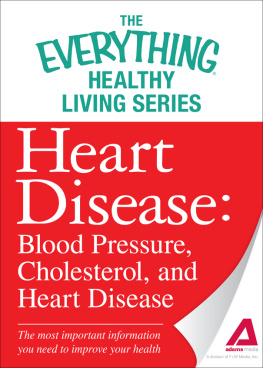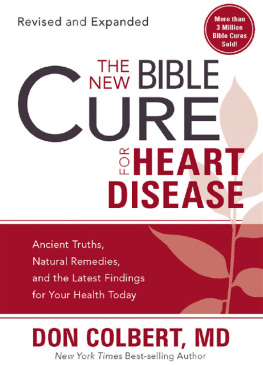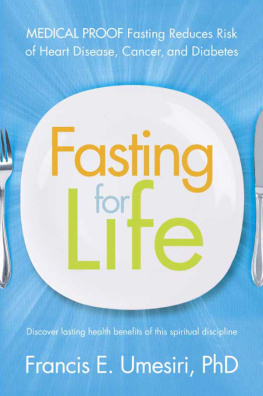1.1 Galen and His Influence
Claudius Galen (AD 130200), a Greek physician, who was destined to dominate medicine for many centuries, was a prolific writer and a showman of genius when carrying out dissections, primarily on animals, for the Roman public. Galen was born in Pergamon in Turkey and had taken on a variety of medical teachings when visiting Athens and Alexandria, before moving to Rome in AD 162. He elaborated and popularized the teachings of Hippocrates, the Greek father of medicine born in the fifth century BC and wrote with such conviction and dogmatism that few doctors dared to criticize him.
Galens views on health and treatment were based on his belief that phlegm (produced by the lungs) which makes the body cold and wet and is composed of colourless secretions such as sweat and tears, yellow bile (produced by the gall bladder) which makes the body hot and dry, black bile (arising from the spleen) which makes the body cold and dry and darkens the blood and the stool and blood (from the liver) which makes the body hot and wet constituted the bodys four basic humours . In his work, On the Temperaments , Galen argued that the predominance of a particular humour determined a persons temperament which could be either melancholic, phlegmatic, sanguine or choleric and that a short-term excess or deficiency of a humour produced illness. The key to good health was maintaining the humours in a state of balance, not always easy when humoral balance was susceptible to being affected by a variety of influences including, for example, seasonal variation. Physicians would attempt to restore balance by drawing unwanted matter out, via bleedings, purges and vomits or perhaps by adjustments to aspects of lifestyle.
The veneration of dogma proclaimed by Galen and other authoritative people largely stifled any interest in experimentation or proper scientific exploration in medicine until well into the seventeenth century. And even the few who did attempt to increase their knowledge by close observation or simple experiment often interpreted their findings in the light of the currently accepted dogma. When, for example, Andreas Vesalius, a sixteenth-century Belgian physician, first dissected a human heart and did not find pores, said by Galen to perforate the septum separating the ventricular chambers, the Belgian assumed the openings were invisible to the eye. It was only several years later after his initial investigation that Vesalius had the confidence to declare the Galens pores did not exist.
Similarly, the announcement of the discovery of the circulation of the blood by an English physician, William Harvey, in 1628, met with violent opposition because it contradicted Galens view that blood flowed to and fro in a tide-like movement within arteries and veins. Even when it was admitted, rather grudgingly, that Harvey was probably correct, a defender of the established view wrote that if the new findings did not agree with Galen, the discrepancy should be attributed to the fact that nature had changed; one should not admit that the master had been wrong.
1.2 Treating the Sick in Medieval Times
Medieval life could be unhealthy because of poor hygiene, lack of knowledge as to how diseases spread and how the body functions. A brilliant summary of these times is given in Andrew Sculls impressive work, Madness in Civilization ;
This was a world of malnutrition and famine, with mass starvation an ever present possibility and often a reality. So too with disease, whose ravages are most visible in the brute demographic fact of low life expectancy: the medieval man who reached the age of forty-five was the exception, and given the perils of childbirth, his female counterpart was generally even shorter-lived. In the immediate aftermath of the advent of the Black Death in 1348, mortality rates were yet higher, as outbreaks of plague continued throughout the fourteenth century, reducing European population by perhaps a third. Many people lived on the very margins of subsistence, with diets lacking in basic nutrients, especially in the winter months, and unable to understand let alone control raging infections, or the multitude of parasitic and insect borne pathogens (not to mention societys failure to deal with the routine contamination of both food and water by excrement, human and animal). It is thus no surprise to learn that the burden of disease was staggering.
(From Madness in Civilization by Andrew Scull, 2015 Andrew Scull. Reprinted by kind permission of Thames & Hudson Ltd., London.)
The cause of most illnesses was generally thought to be divine judgement, Gods punishments for sinners, a torment they deserved. In the words of Rabanus Maurus Magnentius (c. 780856), archbishop of Mainz in Germany and a prolific commentator of Holy Scripture, Sickness is a disease caused by viceFever is a fleshly desire, burning insatiablySwelling leprosy is puffed-up pride. He has scabs on his body whose mind is ruined by the lusts of the flesh. (Given in Scull .)
So people often sought religious cures for their medical problems. Votive offerings, such as small wax models hung on altars, were made by sufferers in the hope that God might relieve them of their ailments. If a physician was sought, it was usually accepted that he only acted as a conduit to God for any healing that took place. Without Gods blessing, there was little or no hope of being cured medically. This attitude did, of course, relieve the physician of exploring further why some of his suggested remedies appeared to be ineffective, in addition to providing a ready-made excuse if the patient died.
For the medieval physician, choice of treatment depended largely on the results of observing one or two patients or on reports from colleagues, again based on very limited number of observations. But as patients rather inconveniently vary in their responses to treatments, this was often the recipe for the development of treatments that were disastrously ineffective when applied more generally. And many suggested treatments were very, very unpleasant. For example, Ian Mortimer in his excellent book, The Time Travellers Guide to Medieval England , describes the remedy for a bladder stone suggested by the well-respected physician, John Gaddesen, namely dung beetles and crickets with their heads cut off and fried in oil. And equally nasty is Gaddesens recipe for treating diseases of the spleen which involves the heads of seven fat bats. (Sounds rather like a visit to a Heston Blumenthal restaurant for dinner.)
Each proposed treatment, however absurd, might be taken up by enthusiasts only to be dropped when another, often equally absurd, became fashionable. Even the oath taken by Western physicians since the time of Hippocrates, in which they swear to protect their patients from whatever is deleterious and mischievous, did not manage to stop many assaultive therapies being given, or to lessen the persistence of barbarous practices, for example, copious blood-letting. Even the most powerful members of society were vulnerable to the ill-informed if well-intentioned physician. At 8 oclock on Monday morning of 2nd February 1685, for example, King Charles II of England was being shaved in his bedroom. He became unconscious, rallied once or twice and, after a few days, died. Doctor Scarburgh, one of the 12 or 14 physicians called to treat the stricken king, recorded the efforts made to cure the patient.











